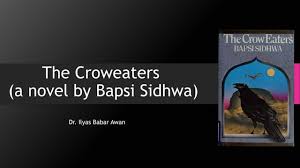Investigating the Impact of Stylistic Amplification in Urdu Translation of Bapsi Sidhwa’s English Novel
Keywords:
Stylistic Amplification, Urdu Translation, The Crow Eaters, Translation Fidelity, Molina and Albir, Mona BakerAbstract
This paper examines the aspect of stylistic amplification in the Urdu translation of The Crow Eaters by Bapsi Sidhwa, translated by Umer Memon as Jungle Wala Sahib. The article draws upon the amplification strategy by Luisa Molina and Amparo Hurtado Albir (2002), as well as Mona Baker’s theory of narrative in the study of how stylistic options influence the faithfulness of translation in literary work. Applying a comparative textual analysis of selected passages, the paper refers to several instances in which neutral or emotionally charged narrative devices in the original text are transformed into explicitly emotionally charged or ideology-laden expressions in the Urdu version. The results indicate that although amplification can be successfully used to improve readability and cultural relevance to the Urdu audience, it is likely to overemphasize the personalities of characters and the tone of the story, thereby altering the stylistic nature of the original work. The research will contribute to the broader discussion of the ethical questions surrounding translation and literary style, specifically how much or how little of the story a translator should alter to adapt it across languages and cultures.
Downloads
References
Abdallah, K. (2017). [Review of the book On translator ethics, by A. Pym]. HERMES – Journal of Language and Communication in Business, 26(51), 113–116. https://doi.org/https://doi.org/10.7146/hjlcb.v26i51.97440
2. Darmayanti, N. P., Yadnya, I. B., & Sedeng, I. N. (2019). Amplification and transposition in the translation of English commands into Indonesian with reference to Harry Potter’s novel. SOSHUM: Jurnal Sosial dan Humaniora, 264–273.
3. Farias de Souza, L. M. (2015). [Review of the book Evaluation in translation: Critical points of translator decision-making, by J. Munday]. Cadernos de Tradução, 35(2), 441–455. https://doi.org/https://doi.org/10.5007/2175-7968.2015v35n2p441
4. Grácio, R. S. (20217). Gender distorting genre distorting gender: Exploring women’s rock musicking practices in contemporary Portugal. Exeter: University of Exeter.
5. Marino, L. (2022). Stylistic approaches to translation: An overview. MediAzioni, 34, A220–A235. https://doi.org/https://doi.org/10.6092/issn.1974-4382/15558
6. Nida, E. A., & Taber, C. R. (1969). The theory and practice of translation. E. J. Brill.
7. Rajan, K. (2019). “Translation should be seen as a dialogue between cultures”: An interview with Prof. M. Asaduddin. FORTELL(39 (July)), 120–121.
8. Robinson, D. (1997). Tejaswini Niranjana, Re-Translation, and the Problem of Foreignism. Tradterm, 4(2), 149–170. https://doi.org/10.11606/issn.2317-9511.tradterm.1997.49857
9. Spivak, G. C. (1994). The politics of translation. In Destabilizing theory: Contemporary feminist debates (pp. 177–200). Routledge.
10. Von Flotow, L. (1991). Feminist translation: Contexts, practices and theories. TTR: Traduction, terminologie, rédaction, 4(2), 69–84. https://doi.org/https://doi.org/10.7202/037094ar

Downloads
Published
Issue
Section
License
Copyright (c) 2025 Scholar Insight Journal

This work is licensed under a Creative Commons Attribution 4.0 International License.
Authors retain the copyright of their work. All articles in Scholar Insight Journal are published under the terms of the Creative Commons Attribution 4.0 International License (CC BY 4.0).
This license permits anyone to read, download, copy, distribute, print, search, or link to the full texts of the articles, and to use them for any other lawful purpose, without asking prior permission from the author(s) or the publisher, provided proper attribution is given to the original work.




